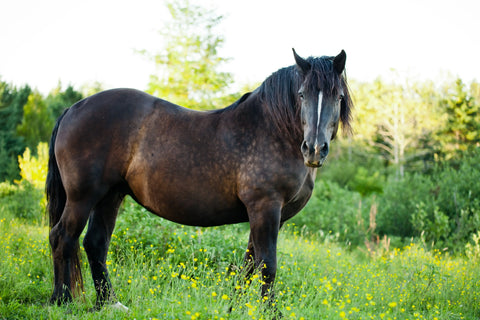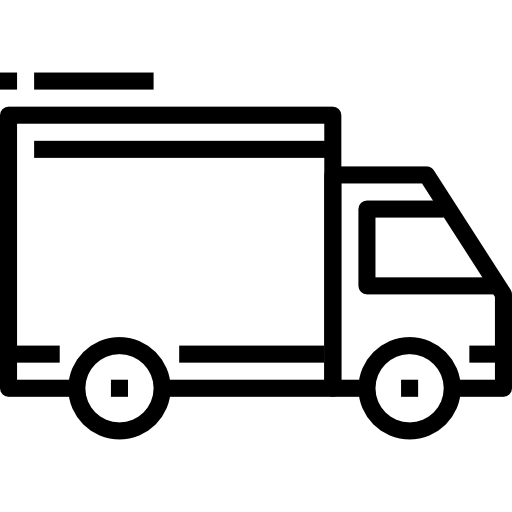
The Importance of Shoeing a Horse: A Practical Guide
of reading - words
As the saying goes "no foot, no horse", the horse's foot is a very popular part in the equine world. Its main function is to maintain the morphological balance of the horse, so it is important to take care of it. Aside from trimming, natural trimming and other practical horse care, what about the shoeing side of things? Is it essential or not for the equine to be shod?
The answer to this question is unfortunately not unanimous, since everyone has their own opinion on it. In this guide, let's focus instead on the importance of horse shoeing. Afterwards, you will discover for yourself if shoeing a horse is essential or that an equine is better off barefoot.
Why shoe a horse?
With the aim of improving the well-being of equines, their comfort and their performance, equestrian accessories for horses such as saddles, bits, gaiters, straps, stirrups, bridles, are of major importance. The horseshoeis no less.
Note that the role of the horse's foot is to support the animal's entire body, propel it and absorb shocks. The most obvious reason to shoe a horse is to prevent wear and tear on its hoof. The horseshoe is then essential to protect the latter against shocks and the possibility of injury.
Shoeing also helps compensate for the equine's poor posture. In the world of horse riding, it often happens that the equine is faced with foot positioning faults. As a result, shoeing prevents him from suffering from certain pains, lameness or laminate. Therefore, orthopedic fittings work miracles to correct defective balance. Appropriate fittings can therefore solve several fitting problems.
In addition, the horseshoe pose provides more stability to the animal. Small stones under horses' hooves can cause wounds and even abscesses. The same applies to snowy, muddy or sandy terrain. Crampons are very practical in these cases, to prevent slipping.
Finally, shoeing serves to optimize the functioning of the horse's foot when it works. We know that horses are exposed to significant endurance work, like draft horses who work on difficult terrain. During equestrian or leisure activities, an equine can travel great distances, go on multiple hikes or rides on a riding arena. A good shoe will therefore allow him to feel comfortable in his hoof.
Principles of hardware
First of all, it should be noted that shoeing a horse is the profession of the farrier. His job not only consists of fixing iron nails to the equine's feet, it also helps with its well-being. Farriery is in high demand in the world of horse riding, given that the farrier has the necessary skills to shoe an equine. It is found in equestrian centers, horse racing stables, stud farms and equestrian sports, it is also available to private horse owners.
To shoe a horse, the farrier must first carry out a good trimming. Trimming a horse is a necessary operation in order to adjust the size of the horn before fitting the shoe. This involves removing the excess horn, which grows at around one centimeter per month, to restore the equine's foot to its normal balance. Under the foot: the frog, bars, heels, sole and walls are the parts to be stressed. The farrier must bring the angle of the hoof wall closer to the angle formed by the pastern and the shoulder, approximately 45 to 54 degrees. When trimming, it is essential not to damage the fork and the sole, rather let them breathe and grow.
The farrier must forge the shoe first, once it is ready he puts it on the horse's hooves, then he pins it with nails which he will drive into the horn. We then see the nails emerging on the wall of the feet. Indeed, shoeing is a painless procedure for the equine, at least if the farrier has not touched any sharp part of the foot.
For the next stage of shoeing, the farrier cuts the protruding nail tips that stick out through the wall, in order to prevent the horse from getting injured. The rest is then folded or grated if necessary into the horn. After rasping, the farrier must round the edge of the wall.
What are the different types of hardware?
The rolling shoe is made for equines reluctant to wear shoes. This involves improving the tilt of the foot by beveling the front of the iron. Instead of leaning on the heel, some horses use the hoof clip, the rolling shoe is very useful for them.
Shoeing a foal. Shoeing young horses is not customary before breaking in. In fact, the horn of their hooves is better strengthened when these young horses are barefoot. Farriers and veterinarians are the only ones to schedule the first shoeing sessions.
Shoeing a knock-knocked horse. The foot of a knock-in horse is by nature turned outwards, the complete opposite of a horse. In order to resolve this upright problem, the farrier must place asymmetrical shoes to rebalance the horse's limb. Thus, suitable shoeing can reduce the suffering of equines with locomotor pathologies such as navicular disease, tendinitis or podotrochlear syndrome.
The shoeing of a racehorse. Galloping, steeplechase or trotting racing horses need specific shoes. All horses must be light during the race, the shoe must not constitute a hindrance when galloping, nor a burden on the foot. Certain aluminum shoes are in fact intended specifically for racing horses.
Is shoeing a horse obligatory?
Iron or no iron? Should you shoe or unshoe the horse? The debate currently divides the equestrian community. If most riders opt for shoes out of habit, others think that it is normal like our shoes on our feet, barefoot enthusiasts also have their say. A beginner rider would then ask himself the question: “Is shoeing my horse a necessity? ". The choice of whether or not to shoe your horse's feet depends on several factors.
First of all, you have to take into account the basic quality of the foot. This can vary depending on the breed because each equine has its own foot. In addition, certain disciplines are suitable for “barefoot” horses, such as trotting races, walks or occasional walks. Otherwise, the use of the horse is also an important factor linked to the choice of shoeing. In short, is shoeing a horse a necessity? It is rather a question of reflection on three things: the work of the horse, the place where it works and its living conditions.
When should you shoe your horse?
Normally, it is customary to have the farrier come after 6 to 10 weeks to re-shoe. However, it depends on the type of activity of the horse, the frequency with which it uses its feet and the condition of the terrain it frequents. However, each animal has a different anatomy and its own physical condition.
Like ponies: either they are shod on their front legs or they are barefoot. The advice of your farrier is the most recommended to know the most suitable care for your horse. It is quite different for orthopedic fittings, dressings or for unshoeing. Otherwise, orthopedic problems can be taken care of by your equine veterinarian, laminitis, osteoarthritis, foot abscess, navicular syndrome…
How much does it cost to shoe a horse?
The shoeing price for an equine can vary from one region to another, from one farrier to another, and also from one discipline to another. All prices excluding travel costs.
Classic 4-leg fittings cost on average €84, for 2 legs it’s €58.
The trimming of the posterior costs 18€. As for 4-foot trimming, for 1 horse it is €40, 2 horses €35 per horse and for 3 horses €33 per horse.
If the horse's foot also needs special fittings, the intervention may cost more. The farrier's prices are as follows: basic price of a classic shoe added to the price of the special shoe. A fitting with plates costs €28, fitting with silicone for 2 legs €23, fitting with mortises for 4 legs €18, fitting with mechanical modifications €10.
It’s the same principle for orthopedic fittings. Welded board irons at €35, welded egg irons €35, Equi + irons €43, Duplo irons €20 to €38, Alu ACR iron €52 and finally Alu Comète irons €28.
In all cases, it is however recommended to choose your farrier carefully to avoid additional costs. In particular, farriery requires a certain skill at the risk of poor trimming or a poorly shod horse; calling on veterinarians can cost you even more.










